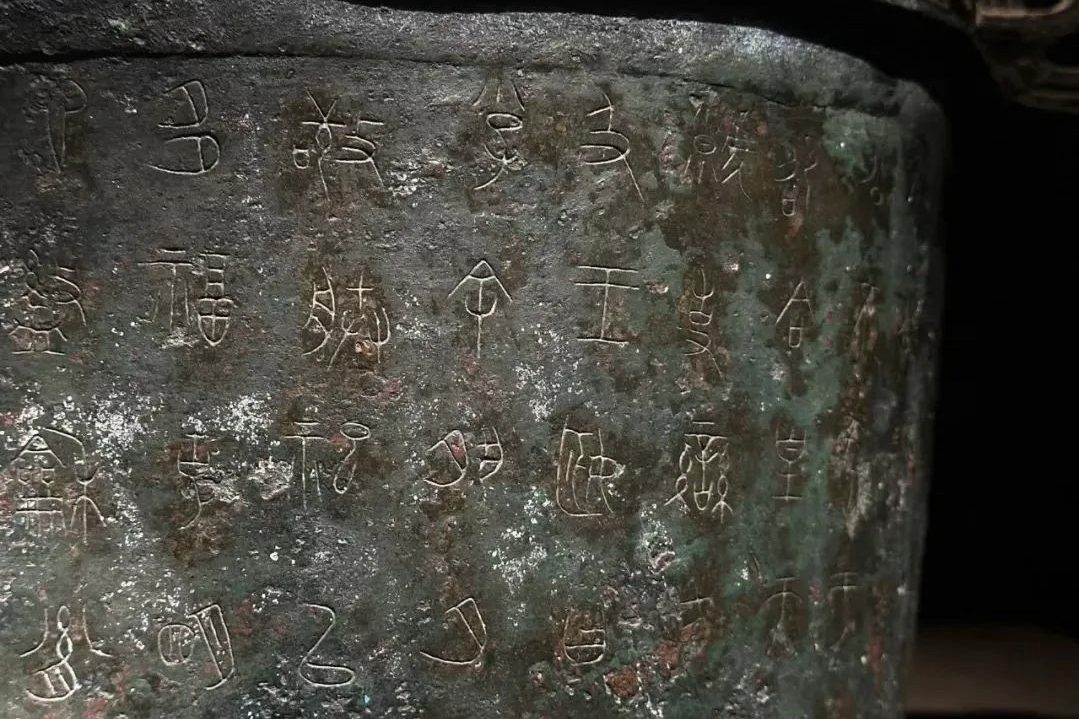On 20 March 2024, the temporary exhibition “BU QI” opened at the Linhai Museum. Artefacts from more than 10 museums across China, including the Baoji Bronze Museum, Zhouyuan Museum, Xi’an Museum, Fufeng County Museum, Maoling Museum and others.
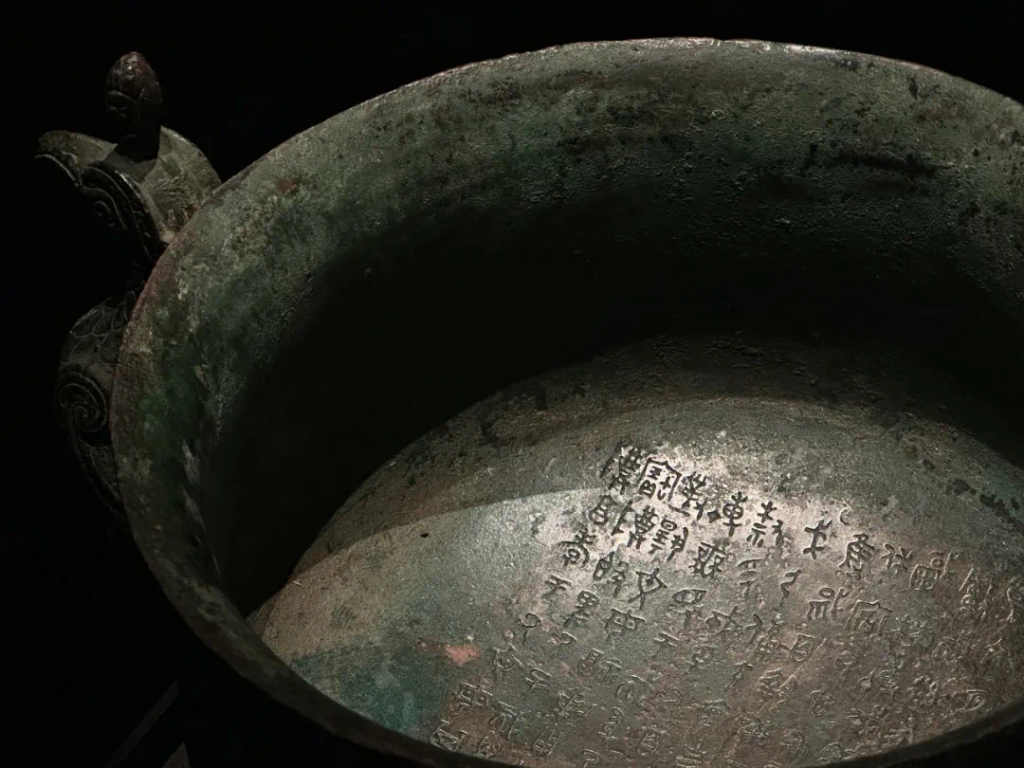
Jinwen, which includes Chinese writing from the Shang Dynasty to the Zhou Dynasty, has recently been quietly converging in Linhai. The exhibition aims to show the charm of ancient Chinese writing through inscriptions on bronzes.
JINWEN: the name of a Chinese character script that refers to inscriptions cast on bronzes from the Shang Dynasty (ca. 1600 B.C. – 1046 B.C.) and the Zhou Dynasty (ca. 1046 B.C. – 256 B.C.)
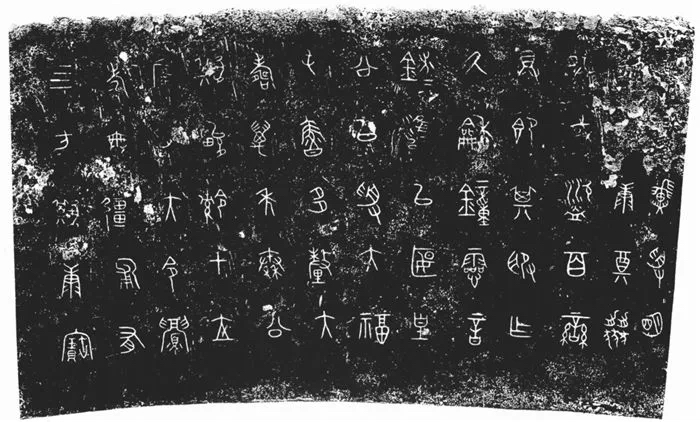
Preface
Cultural relics are not only the products of history, but also the channels of dialogue with history. In the exhibition “BU QI”, through the shape and craftsmanship of the bronzes and the inscriptions on the vessels, the world can discover the long history of China’s ancient ancestors. These artefacts have fallen from the altar of kingship over thousands of years and have demonstrated an extraordinary fascination.
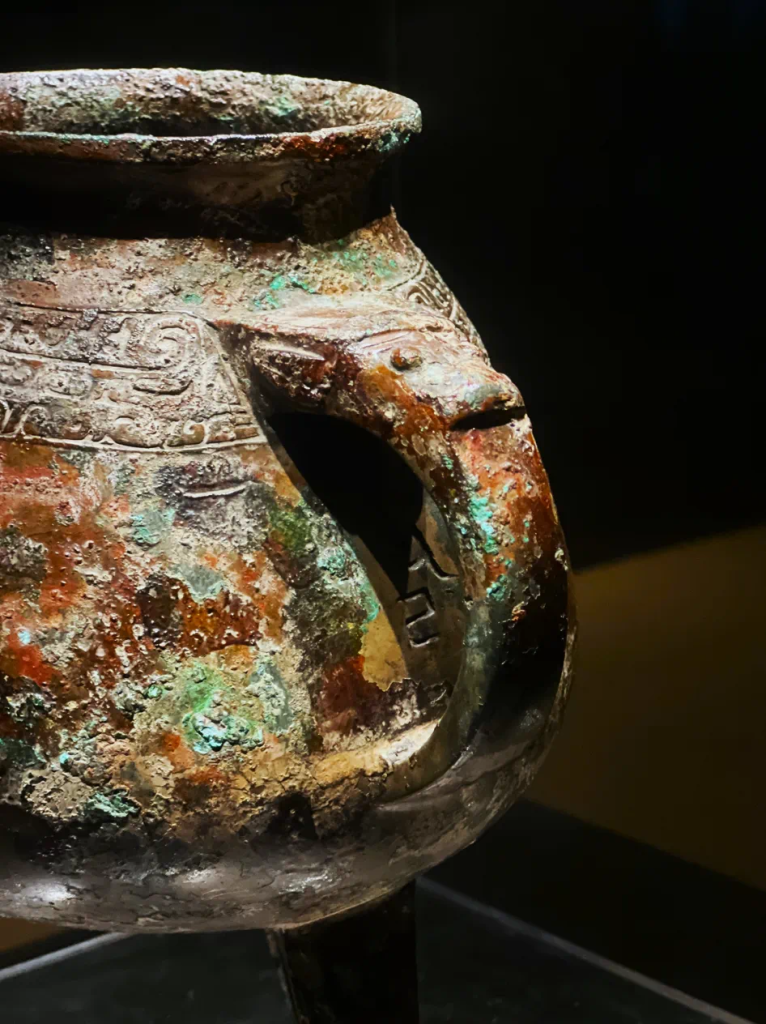
In China there is a group of precious artefacts, for instance, among which the Shi Qiang Pan, the Qin Gong Bo and other bronzes are more famous. These bronzes not only show us the level of craftsmanship and political culture of the time, but they also contain an important artistic heritage: Jinwen. This exhibition tells us the story of the nearly 3,000-year history of the Chinese character through bronze vessels.
Inscription – Shi Qiang Pan (史墙盘)
Shi Qiang Pan: a historian whose name was Qiang that cast a plate. It is worth noting that this is a dish set used as a ceremonial vessel, and is also a national first-class cultural relic of China and one of the cultural relics prohibited from being exhibited abroad.
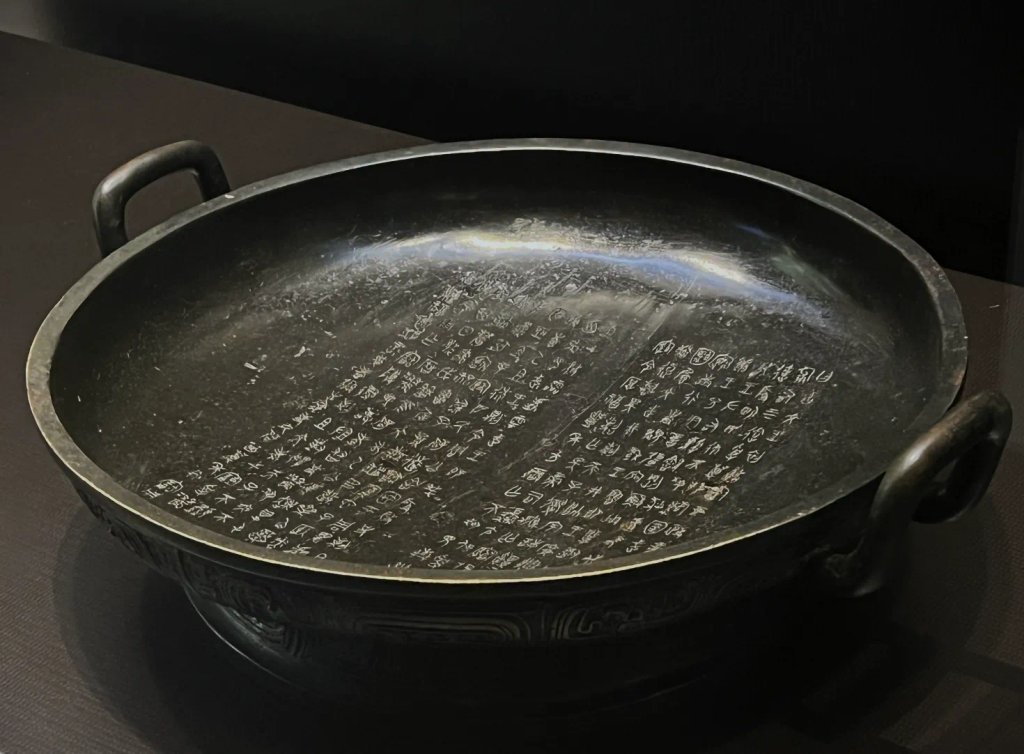
It was only during the Western Zhou period (c. 1046 to 771 BC) that the aristocracy was able to cast bronzes. So what was the status of Qiang?
Qiang is from the Wei family. There was a famous tyrant in China, the last king of the Shang dynasty, Zhou (c.1105BC-1046BC). And the ancestor of the Wei, Ziqi, was the elder brother of King Zhou of Shang. After the Zhou Dynasty destroyed the Shang Dynasty, Wei Ziqi joined the Zhou Dynasty as an official. The Wei family of the Zhou Dynasty became a great family after several generations. Thus came the appearance of Shi Qiang Pan.
The first half of the text of the Shi Qiang Pan mainly tells about the achievements of seven generations of emperors of the Zhou Dynasty, and the second half mainly tells about the deeds of six generations of the Wei family. It is not only a testimony of the change of Chinese characters, but also a glimpse of the social structure of the Western Zhou Dynasty.
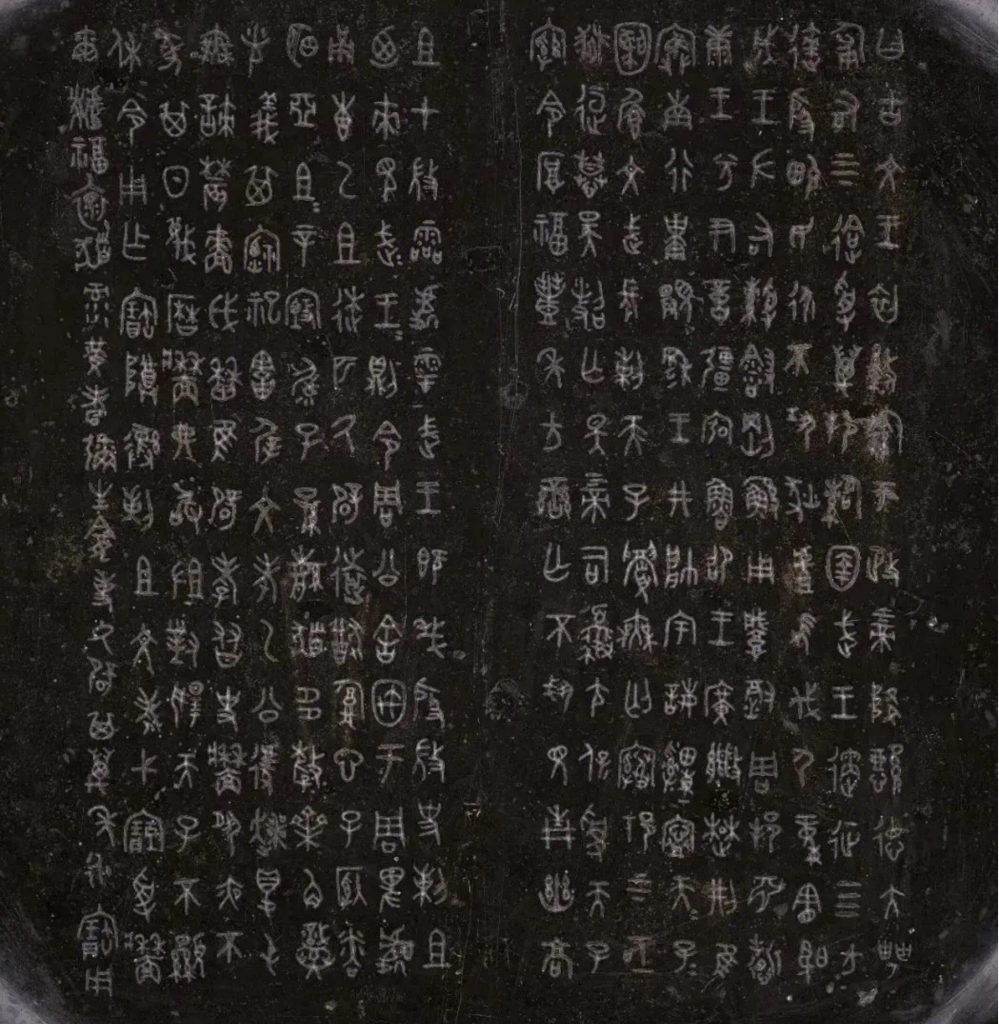
In later times, the Zhou Dynasty fell apart. At the beginning of the Spring and Autumn period, the kingship gradually collapsed. Instead of focusing on the royal nobility, the gold texts of this period began to reflect local features such as the social activities of the vassals and other nobles.
Bronze – Qin Gong Bo (秦公镈)
Qin Gong Bo (秦公镈) is an early Spring and Autumn bronze (770 B.C – 695 B.C) from the Baoji Bronze Museum in Shanxi province, and is an ancient Chinese musical instrument that was struck with the body of a hoe.
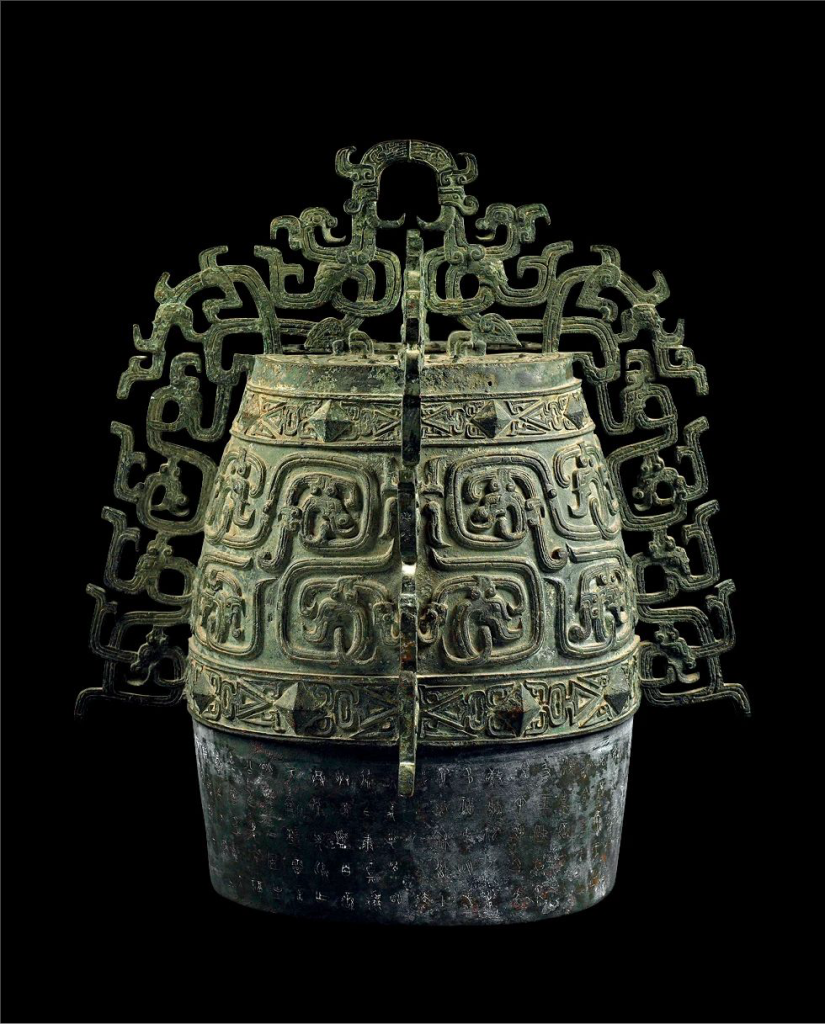
Qin Gong Bo is a new archaeological discovery made in Baoji in 1978, when villagers accidentally discovered eight bronze pieces in a cellar, of which Qin Gong Bo is the largest found, with a height of 75.1 cm, a weight of 62.5 kg and a very majestic shape.

The Inscription of Qin Gong bo
Historical research suggests that the Bo was used as a musical instrument to Hegemony of Qin state temple rituals. Often used together with the ancient Chinese musical instruments Carillon (Bian Zhong). The instrument’s sound was very loud, so historians have speculated that it was usually used to conduct the orchestra and control the overall rhythm.
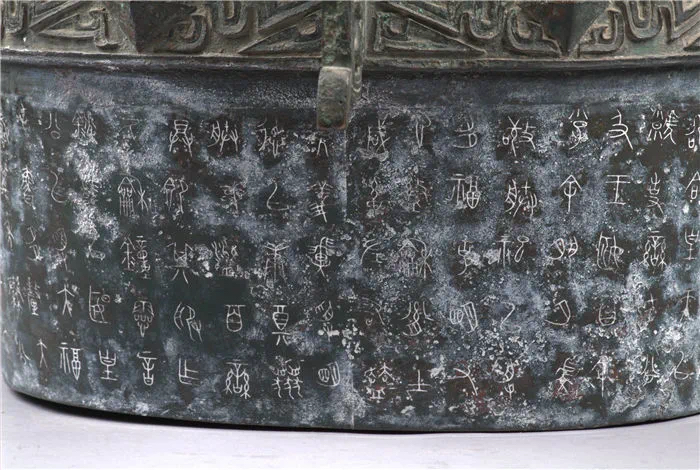
In addition to its exquisite modelling and musical function, the Qin Gongbo bears an inscription of 135 characters. It’s an important historical reference for the study of the Qin dynasty and its predecessor, Hegemony of Qin.
The storia of the inscription
The inscription records the Hegemony of Qin as a vassal state of the Zhou dynasty at the time. And the first-person view of the descendant, Duke Wu of Qin, records that his ancestor, Duke Xiang of Qin, was rewarded with a house and a kingdom for saving the king of the Zhou, receiving land, subjects and prestige. Above all, the descendants of Duke Xiang of Qin were not afraid to work hard. Meanwhile he carefully managed relations with vassal states and surrounding tribes.
In Chinese history, the Qin Hegemony lasted for almost 700 years until the fall of the Qin dynasty. The Qin Hegemony had many capitals and, since Duke Xiang of Qin granted the title of hegemony to Duke Wu of Qin, the owner of Qin Kung Bo, the Qin Hegemony moved its capitals four times in the short space of 140 years.
In the long history of Qin, Duke Wu of Qin learnt from the experience of his ancestors. He strengthened his territorial control, and he eventually unified the Guanzhong region of China, which is today the central part of Shaanxi Province in China.

And the Guanzhong region was surrounded by the Qinling Mountains to the south and the Wei River running through it, and was surrounded by mountains on all sides, which made it a natural land barrier. The possession of this entire region also laid the foundation for the Qin Shi Huang (the first Chinese emperor).
Therefore, this inscription embodies the spirit of the Qin people and the determination of the Qin state to become strong. Eventually, in 221 B.C., under the reign of Qin Shi Huang, China was unified.
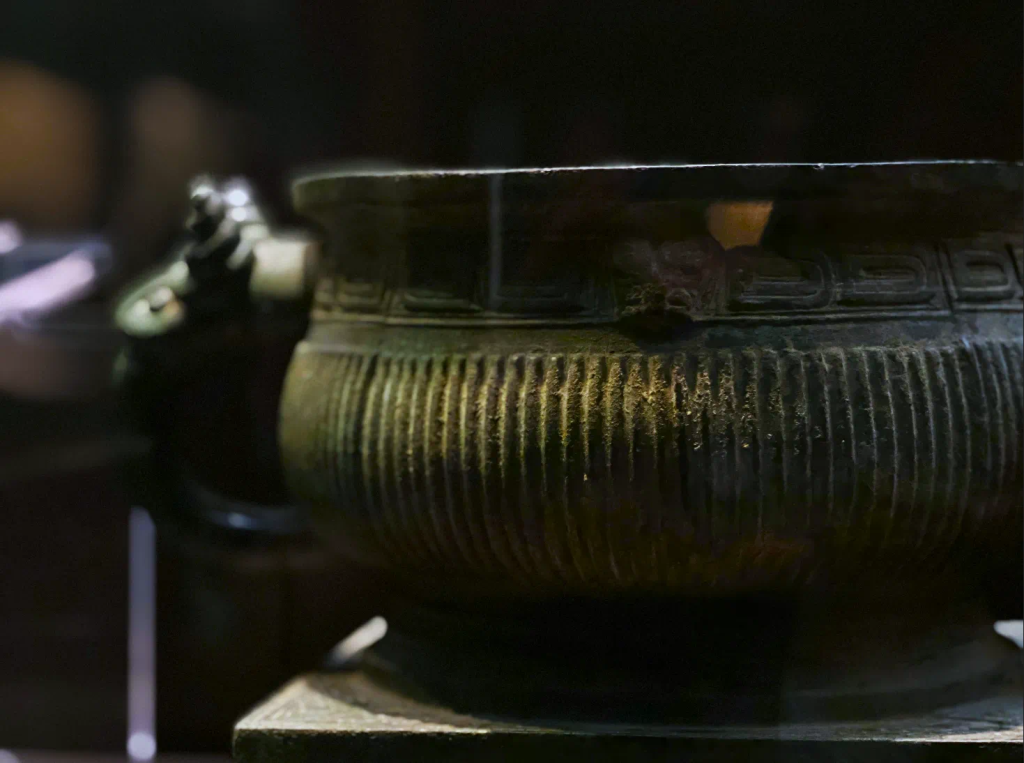
The “BU QI” temporary exhibition
This exhibition features bronzes from the Shang Dynasty to the Western Han Dynasty (1675 BC – 8). It includes eight national treasures with inscriptions of more than 110 characters and a complete presentation of bronze inscriptions with more than 3,000 characters. You will be able to see the details of the inscriptions up close in high definition.
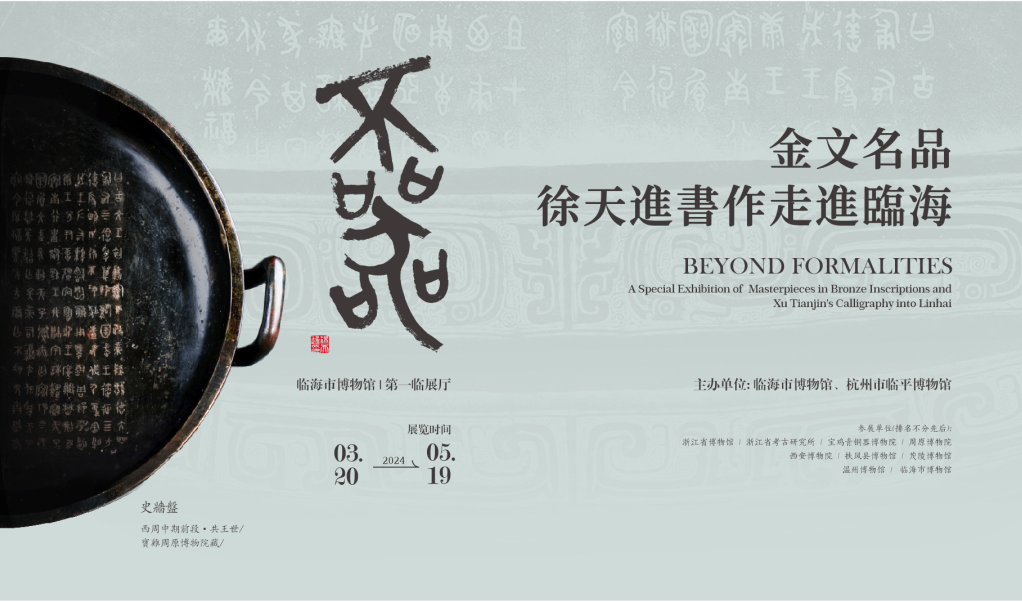
Information
Date: 20 March to 19 May 2024
Location: Linhai Museum, 1st floor, 1st temporary exhibition hall
Address: Linhai Museum, No.288 Linhai Avenue, Linhai City, Taizhou, Zhejiang, China
Free admission with compulsory booking on the Linhai Museum’s WeChat app.
The exhibition is open according to the following schedule
Tuesday to Sunday:09:00 am to 4:30 pm
Closed:every Monday (except public holidays)
Telefono:0576-89366066
Source
Shi Qiang pan (French-language version)/ WIKI INFO
Qin Gong Bo (French-language version)/ WIKI INFO
